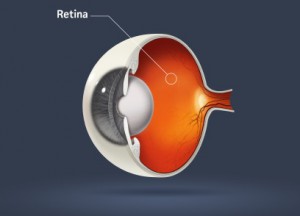0161 4083456 
RETINAL VEIN OCCLUSION
Retinal Vein Occlusion – An Eye Circulation Problem

Retinal vein occlusion (RVO) is second only to diabetic retinopathy as the most common retinal vascular condition people can experience. Anyone of any age can get a retinal vein occlusion although they are more common in the mid to later years, with the over 65′s being particularly affected.
Symptoms of retinal vein occlusion range in severity from no noticeable symptoms at all to serious eye pain and even blindness in the affected eye.
The retina is like a fine film that lines the back of your eye and it is the part of the eye that gives us sight. The retina turns the light that enters they eye into signals to your brain, this is basically how you see.
Retinal veins are like small pipes in the retina of the eye, their function is to drain blood from the retina and pump it back to your heart. When you have an retinal vein occlusion it means that one of these veins has become blocked.
Retinal veins become blocked when the blood in them is unable to flow and this means that the vein can no longer drain blood from your eye. When the vein is blocked some blood and other clear fluids leak into the retina this then damages the sight.
It is thought that the vein becomes blocked because of pressure on it. If a small retinal artery hardens because of a condition like high blood pressure it may press on the retinal vein and block it.
There are several types of retinal vein occlusion a person can experience including small branch, severe branch and central retinal vein occlusion.
